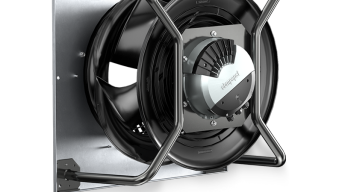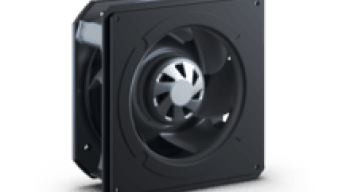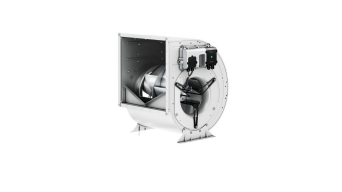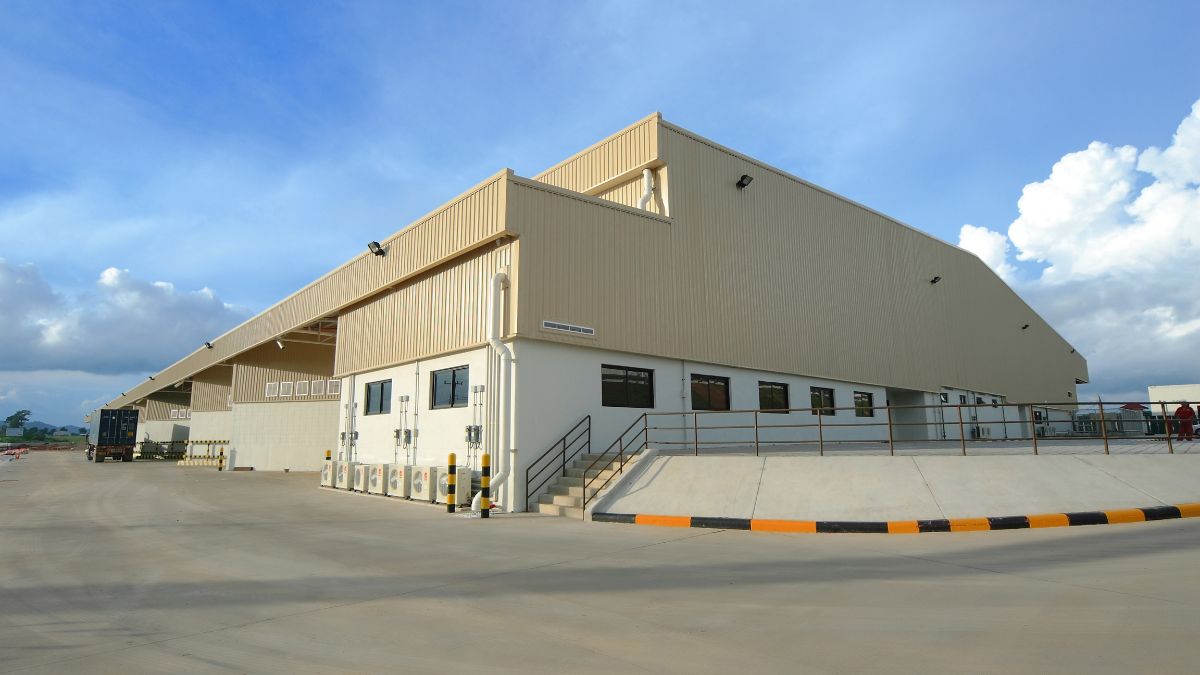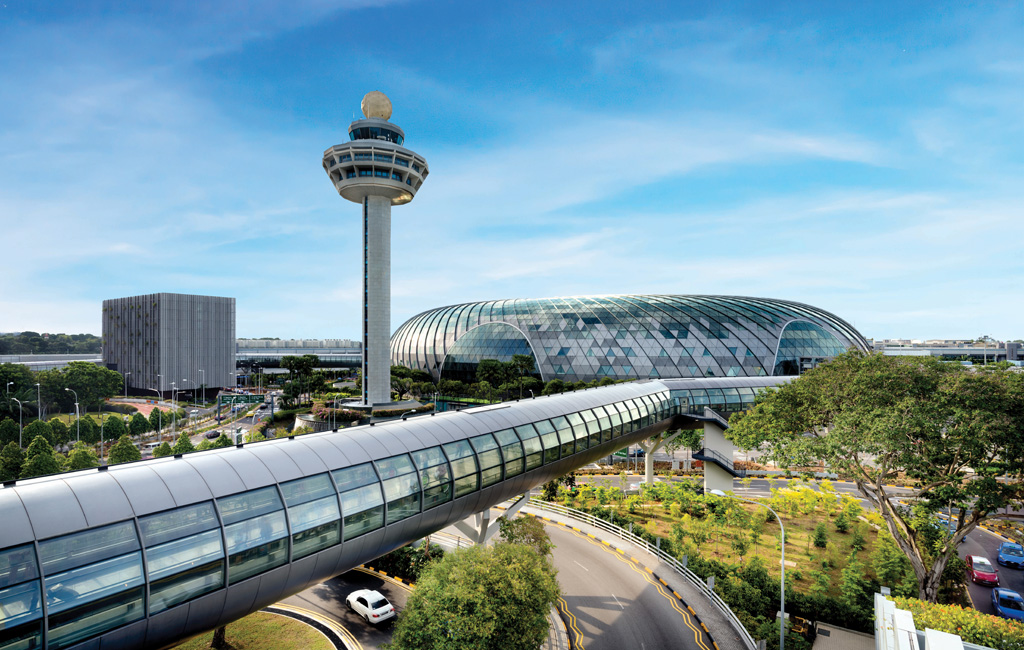AHU fan retrofit success story: Energy savings of 48% were achieved by retrofitting AHU fans.
In an effort to enhance energy efficiency at an aerospace manufacturing facility in Singapore, seven AC belt-driven centrifugal fans were replaced with fourteen EC centrifugal fans (RadiPac). With the AHU fan retrofit, energy consumption was reduced from 31,890 kWh/month to 16,610 kWh/month. Singapore’s average OM GEF in 2022 is 0.4168 kg CO2/kWh. Hence, the AHU fan retrofit reduced CO2 emissions by 6,369 kg per month!
The aforementioned benefits of EC fans as AHU fans are just the tip of the iceberg. As ebm‑papst continues to innovate, our EC fans will be engineered with more smart and advanced features, enabling even further energy optimisation.
We highly recommend the below fans for your AHUs. If you'd like tailored support in fan selection, we recommend contacting us directly.
Reasons to upgrade your AHU fans
The direct benefits of energy-saving fans are clear – less energy consumed equates to lower operational costs. However, there are several other less prominent benefits that merit discussion.
There is broad agreement among scientists worldwide that, to mitigate the most severe effects of climate change, global human-induced carbon dioxide (CO2) emissions must decrease by approximately 45% compared to 2010 levels by 2030, ultimately reaching net-zero by 2050. The rise in global temperatures is directly tied to the total amount of CO2 released into the atmosphere, meaning that as long as emissions remain above zero, the planet will continue to warm. Consequently, the harmful impacts of climate change will keep intensifying as long as emissions persist.
Utilising energy-saving technology such as ebm‑papst's EC fans in buildings can be one of the possible strategies to employ to reduce carbon emissions, which contributes towards this global goal.
Source: Netzeroclimate.org
To reduce energy consumption and enhance a building's overall energy efficiency, it's crucial to first examine how energy is utilized throughout the structure. A 2018 study by the Building and Construction Authority (BCA) highlighted that major contributors to a building's energy use include mechanical systems such as heating, ventilation, air conditioning (HVAC), lighting, and vertical transportation systems. Among these, cooling systems alone can consume as much as 60% of a building's total energy, while ventilation can account for approximately 10%
HVAC systems are powered by various types of equipment, including pumps and fans. Notably, fans can represent up to 35% of the energy consumption within the HVAC system
As a result, optimizing the energy usage of HVAC systems is a key strategy for lowering a building's overall energy consumption.
Systems like air handling units (AHUs), condensers, cooling towers, fan coil units, and others operate together to maintain cooling and ventilation in a building. A common feature across all these systems is the use of fans to circulate air throughout the space. In older buildings in Singapore, many of these fans are powered by Alternating Current (AC) motors, which were the standard in the past. A highly effective method to reduce energy use in these systems is to replace the traditional AC fans with more efficient, modern technology such as Electronically Commutated (EC) fans.
Sources: BCA and NCCS
There is a clear shift towards green building policies in the region. Hence, by utilizing EC fans in your build, there is a higher likelihood of meeting the requirements set out by the local government. Here are some examples in the Southeast Asia region:
Singapore: Singapore Green Building Masterplan, MEI Regime, Energy Conservation Act
Malaysia: Green Technology Masterplan 2017 - 2030
Thailand: Thailand Energy Efficiency Development Plan 2015-2036
Indonesia: Indonesia launches National Roadmap for Green Building Implementation
Vietnam: National Energy Efficiency Programme 2019 - 2030
Philippines: Republic Act 11285
Compared to older and more conventional systems, our integrated EC fan system ensures that less energy is wasted. This implies less heat is emitted, which often contributes to wear and tear. This results in a longer product lifespan.
Not only does this mean lower operational costs, products with a long lifespan are generally considered better for the environment because they reduce the need for frequent replacements.
Sustainability is becoming a top priority for companies seeking office space, alongside traditional factors like location and talent. Businesses are increasingly looking for low-carbon, high-quality buildings, even in a slow leasing market, and are often willing to pay a premium for sustainable spaces. JLL research reveals a “green premium” of 7.1% in North America, 9.9% in Asia Pacific, and 11.6% in London. Kirsty Draper from JLL emphasizes that office buildings contribute to a company's emissions, making sustainability a key focus for real estate strategies, as companies aim to meet targets and showcase their environmental commitments.
Source: JLL
Why choose ebm‑papst?
We aim to achieve climate-neutral production in the 2025/26 financial year. This means reaching climate neutrality in Scope 1 and 2. Sustainability has been at our core since our founding: each product we create must surpass its predecessor in economic and ecological performance, contributing to the sustainability of our customers' applications as well.
Since our pioneering integrated electronics before the millennium to today’s networked solutions, we deliver digital value to your applications. Through demand-driven operations, remote monitoring, predictive maintenance, and AI-driven buildings, we collaborate to find solutions that lower costs, save energy, and reduce emissions.
Founded on the belief in pioneering engines and groundbreaking EC technology, innovation has always driven our success. With substantial global investments in R&D, we continuously advance technology, enhancing our customers' applications and embodying technology leadership.
Our global presence ensures we offer rapid, customer-centric solutions while understanding local nuances and languages. By adapting our supply chains locally, we enhance responsiveness and reduce our CO2 footprint. This "local for local" approach allows us to meet customer needs swiftly and efficiently, contributing to a more sustainable future.
Download our AHU fan info packet
This information packet serves as a collection of AHU fan content, specially curated for built environment professionals such as building owners, facility management and installation/maintenance staff. The packet includes...
1. [Brochure] Fan technology for the air conditioning and ventilation industry: This brochure offers an overview of the EC fans we have that are ideal for AHUs.
2. [Flyer] AHU fan projects with estimated cost savings & CO2 reductions in Southeast Asia: This flyer details an overview of our successful AHU fan retrofits in recent years. It includes the estimated annual cost savings due to reduced energy consumption and the estimated amount of carbon dioxide emissions that was reduced as a result of the AHU fan retrofits.
3. [Video] AHU fan retrofit timelapse: A timelapse video that depicts the process of retrofitting an AHU in one of our latest retrofit projects.
